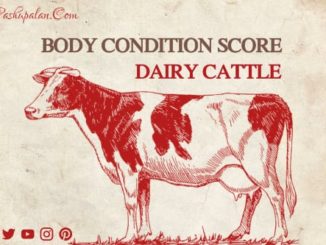Abstract
Global demand for livestock products is expected to double by 2050, mainly due to improvement in the worldwide standard of living. Climate change impacts livestock directly (for example through heat stress and increased morbidity and mortality) and indirectly (for example through quality and availability of feed and forages and animal diseases). Climate change is a threat to livestock production through competition for natural resources, quantity and quality of feeds, livestock diseases, heat stress and biodiversity loss while the demand for livestock products is expected to increase by 100% by mid of the 21st century. Livestock sector contributes 14.5% of global greenhouse gas (GHG) emissions, driving further climate change. Consequently, the livestock sector will be a key player in the mitigation of GHG emissions and improving global food security.

Introduction
Human population is expected to increase from 7.2 to 9.6 billion by 2050. This represents a population increase of 33%, but as the global standard of living increases, demand for agricultural products will increase by about 70% in the same period (FAO, 2009a). Meanwhile, total global cultivated land area has not changed since 1991 reflecting increased productivity and intensification efforts. Livestock products are an important agricultural commodity for global food security because they provide 17% of global kilocalorie consumption and 33% of global protein consumption. The livestock sector contributes to the livelihoods of one billion of the poorest population in the world and employs close to 1.1 billion people. There is a growing demand for livestock products, and its rapid growth in developing countries has been deemed the ‘‘livestock revolution”. Worldwide milk production is expected to increase 1077 million tonnes and meat production 455 million tonnes in 2050. (Alexandratos and Bruinsma, 2012). Livestock production is likely to be adversely affected by climate change, competition for land and water, and food security at a time when it is most needed (Thornton, 2010). Global climate change is primarily caused by greenhouse gas (GHG) emissions that result in warming of the atmosphere. The livestock sector contributes 14.5% of global GHG emissions (Gerber et al., 2013), and thus may increase land degradation, air and water pollution, and declines in biodiversity (Bellarby et al., 2013)
Green House Gas Emissions
Livestock supply chains are a significant source of global greenhouse gas (GHG) emissions, GHG emissions of the livestock sector are mainly comprised of methane (CH4) nitrous oxide (N2O) and carbon dioxide (CO2). Methane contributes the most to anthropogenic GHG emissions (44%), followed by nitrous oxide (29%) and carbon dioxide (27%). Enteric fermentation, a natural part of the digestive process for many ruminant animals, accounts for 39% of livestock sector emissions. Other significant sources of emissions are feed production and processing (45%) and manure storage (10%). The remaining 6% of GHG emissions is attributable to the processing and transport of livestock products (Gerber et al. 2013). Higher concentrations of these gases, can be explained by lower efficiency and productivity of livestock system due to excess loss of nutrients, energy, and organic matter (Gerber et al., 2013).
Green House gas emissions from livestock production contribute more GHG to the atmosphere than the entire global transportation sector. The livestock sector contributes directly and indirectly to GHG emissions, including through animal physiology, animal housing, manure storage, manure treatments, land application, and chemical fertilizers. Direct emissions from animal sources include enteric fermentation, respiration, and excretions. Indirect emissions refers to emissions derived from feed crops, manure application, farm operations, livestock products processing, transportation, and land use allocation for livestock production (e.g. deforestation, desertification, carbon released from cultivated soils). In the livestock sector, indirect emissions play a greater role in the release of carbon to the atmosphere than direct emissions. However, contribution to GHG emissions varies depending on the type of farming system and region. Deforestation, cultivated soils, and land degradation due to livestock production are the main source of CO2 emissions. From total livestock GHG emissions, 9.2% is attributed to land use change, where 6% is due to pasture expansion and 3.2% is due to feed crop expansion.
Livestock contributes 44% of the world’s anthropogenic methane emissions through their normal digestive processes (enteric fermentation) and manure management. During the animals’ digestive process, enteric fermentation converts the feed consumed into digestible feed. Enteric fermentation releases a CH4 by-product through exhalation. Livestock manure releases methane and nitrous oxide gas. The decomposition of the organic materials found in manure under anaerobic conditions releases methane. Fertilizer use, agricultural nitrogen fixation, and atmospheric nitrogen deposition generally increase nitrous oxide emissions.
Livestock influence climate through land use change, feed production, animal production, manure, and processing and transport. Feed production and manure emit carbon dioxide, nitrous oxide and methane which consequently affects climate change. Climate change will affect livestock production through competition for natural resources, quantity and quality of feeds, livestock diseases, heat stress and biodiversity loss while the demand for livestock products is expected to increase by 100% by mid of the 21st century Therefore, the challenge is to maintain a balance between productivity, household food security, and environmental preservation (Wright et al., 2012).
Higher temperatures are much more hazardous for growing and breeding animals than a cold environment. Temperatures exceeding the higher critical level compromise animal performance not only by changing the energy and nutrient metabolism, but also by upsetting the body homeostasis, with detrimental consequences both for immunocompetence and for product quality. In general, livestock with high production potential are at greatest risk of heat stress,
Climate-Smart Livestock
Climate-smart livestock (CSL) solutions can contribute to a reduction of GHG emissions through improved livestock productivity, efficient use of natural resources, carbon sequestration and integration of livestock into the circular bio economy.
Climate Smart Livestock implemented at farm level by considering three objectives
- Sustainably increasing productivity;
- Adapting to climate change; and
- Reducing GHG emissions
Good livestock practices that improve productive efficiency, reduce GHG emissions and adapt livestock systems to climate change. Enteric fermentation is the main source of direct GHC emissions, thus it is recommended to continue implementing practices aimed to improve the feed basket. Increasing the concentrate (high energy feeds containing cereal grains and oil meals) proportion in the animal diet can reduce methane emissions from the animal. Improving feed digestibility and energy content and better matching protein supply to animal requirements can be achieved through better grazing land management, improved pasture species, changing forage mix and greater use of feed supplements to achieve a balanced diet, including crop by-products and processing of crop residues. These measures can improve nutrient uptake, increase animal productivity and fertility and thus lower emissions per unit of product.
Climate-smart livestock focusing on the efficient use of natural resources include higher yields per hectare, higher water productivity, efficient use of low carbon energy, and the reduction of waste along the value chain.
Conclusion
Well-managed mixed crop-livestock systems reduce GHG emissions. The climate-smart farms increased milk production while reducing GHG emissions and increasing carbon stocks. Higher-quality feed with higher digestibility, protein and energy content produced less methane per unit of animal product. A further option for the future is the use of methane inhibitors, which appear to be successful, but would need to be tested in the tropics. Leguminous forages produce high-quality feed and reduce methane emissions, because they contain more condensed tannins which increase the absorption of essential.
Reference
- Alexandratos, N., Bruinsma, J., 2012. World agriculture towards 2030/2050: the 2012 revision. ESA Working paper No. 12–03. FAO, Rome.
- Bellarby, J. Tirado, R. Leip, A. Leip, F. Weiss, J.P. Lesschen, P. Smith. Livestock greenhouse gas emissions and mitigation potential in Europe. Glob. Change Biol., 19(2013), pp.3-18.
- FAO (Food and Agriculture Organization of the United Nations), 2009a. Global agriculture towards 2050. High Level Expert Forum Issues Paper. FAO, Rome.
- Thornton, P, K. 2010. Livestock production: recent trends, future prospects. Philos. Trans. Roy. Soc. B, 365 pp.2853-2867
- Wright,I.A,Tarawali,S. Blummel, M. Gerard,B. Teufel, N.Herrero,M. 2012. Integrating crops and livestock in subtropical agricultural systemsJ. Sci. Food Agric.,92 pp.1010-1015






Be the first to comment